Конспект уроку в 5 класі на тему "Food & Drinks"
Конспект уроку - розроблений спеціально для підручника Prime Time 1. Завдання та інші елементи уроку зорієнтовані на аудиторію дітей з поглибленим вичення іноземних мов, а саме англійської. Урок включає в себе багато інтегрованих завдань з інноваційним підходом до навччання, - різноманітні відео матеріали, аудіо матеріали, роздатковий матеріал, а також матеріали для пояснення головної граматичної теми уроку (йдеться про граматичну конструкцію be going to).
Силки на відео:
1.
- відео-гра для перевірки словникового запасу дітей (можна використати як warming up).
2.
- відео, яке може бути доцільно використане після пояснення граматичної конструкції be going to. Найдоцільніше бути використати наприкінці уроку.
Всі інші додаткові матеріали, необхідні для проведення даного уроку прикріплені в кінці розробки даного уроку. Аудіо-матеріали - на спеціальному диску до підручника.
Порада: залучати всіх учнів до виконання вправ, в кінці уроку обов'язково провести опитування "Хто що запам'ятав та нового вивчив на уроці", давати можливість висловлювати думку всім учням, але виключно англійської мови, пояснвати завдання вправ та робити заключення і висновки до кожного з етапів уроку лише англійською.
Кременецька обласна гуманітарно-педагогічна академія
ім. Тараса Шевченка
гуманітарний факультет
напрям підготовки 6.020303 Філологія (англійська)
ПОГОДЖЕНО
Вчитель: Семенюк Т. О.
Конспект уроку з англійської мови у 5-СГ класі
Дубровицького НВК «Ліцей − Школа» студентки 41-А групи
Лепуги Оксани Вікторівни
Дата проведення: 05. 02. 2018
Оцінка:
Кременець 2018
I. The subject of the lesson: Food & drinks II. The objectives of the lesson:
Practical aim:
v to enrich pupils’ vocabulary on the topic;
v to improve pupils’ speaking skills;
v to improve pupils’ reading skills;
v to improve pupils’ listening skills;
v to develop pupils’ ability of using such grammar structure as be going to; v to develop pupils’ writing skills.
Educational aim:
v to encourage pupils to study well in order to get good knowledge and to become useful people to society;
v to improve pupils’ logical thinking; v to develop pupils’ memory and imagination.
Cultural aim:
v to enlarge pupils’ knowledge about language they learn.
III. Teaching aids and materials:
v blackboard, student’s and teacher’s book, lap-top, video material, cards with task, cards for explaining grammar material, audio materials.
IV. The type of the lesson: combined lesson.
V. The procedure of the lesson
1. Preliminaries: (18 minutes) Introduction. Greeting.
Good morning, dear children! Glad to see you. Sit down, please! Today and 5 weeks more I will be your teacher. My name is Oksana Viktorivna. I hope that all of you are nice pupils and we will have wonderful time of improving your English.
Today we are going to repeat all the vocabulary that you know on the topic “Food & Drinks”, to develop your skills of expressing your own thoughts and ideas, to develop your grammar skills with learning such grammar structure as be going to.
A talk with a pupil on duty.
However, first of all we have to check if all the pupils are present on the lesson.
Who is on duty today?
Fine. Tell me, please, who is absent?
Ok. Thank you, you can take your seat.
A talk on the subject of the lesson. Checking home task.
I think that all of you have already guessed that the topic of our today’s lesson is “Food & drinks”. I believe that all of you know a lot of words on the topic, so today our goal is to improve your knowledge in it and learn some more of them. Firstly let’s revise the vocabulary you have already learnt.
You will watch a video game that will ask you to guess which vegetables and fruits are hidden on every stage of the game. Be very attentive and try to guess the words as quickly as you can. So, let’s start. (Watching video №1)
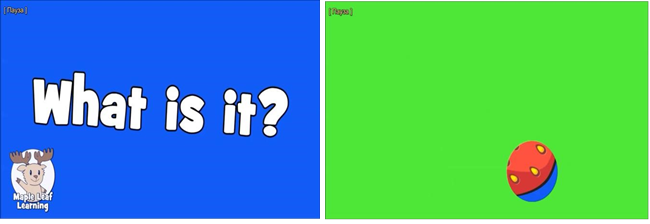
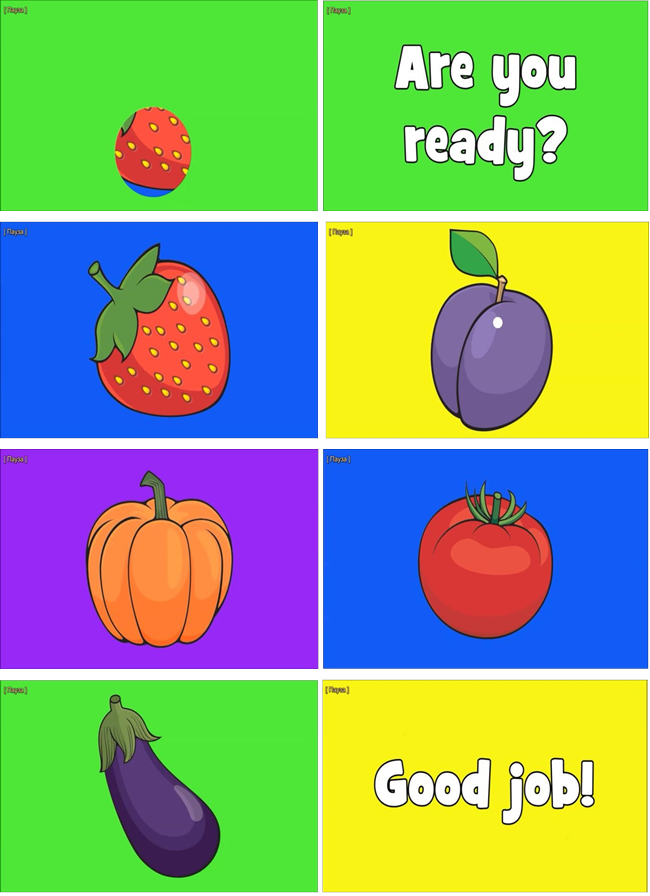
Excellent, of course, these words were very simple. Now I’d like to see how you will cope with the words from your Students’ Book. It was your home task to learn all of them, so let me check if all of you are ready for today’s lesson. I will ask you a word in English and you will give me English explanation of the word. Is it clear? Ok, let’s start. (Exercise1)
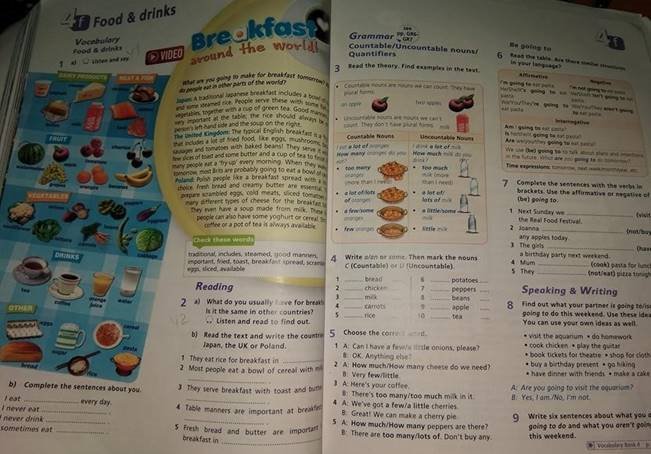
Dairy products:
|
− |
cheese; |
|
− |
youghurt; |
|
− |
butter; |
|
− |
milk; |
Meat & Fish:
− chicken;
− salmon;
− beef;
Fruit:
|
− |
watermelon; |
|
− |
apple; |
|
− |
grapes; |
|
− |
tomatoes; |
|
− |
oranges; |
|
− |
cherries; |
|
− |
bananas; |
Vegetables:
|
− |
cauliflower; |
|
− |
onions; |
|
− |
lettuce; |
|
− |
carrots; |
|
− |
beans; |
|
− |
peppers; |
|
− |
eggplant; |
|
− |
cabbage; |
Drinks:
|
− |
tea; |
|
− |
coffe; |
|
− |
orange juice; |
|
− |
water; |
Other:
|
− |
eggs; |
|
− |
bread; |
|
− |
sugar; |
|
− |
rice; |
|
− |
cereal; |
|
− |
pasta. |
Well done! As I can see most of you are really good in food vocabulary. Those who are not confident in this vocabulary, please, be ready for the next lesson.
2. Main part (25 minutes)
Reading & Speaking & Listening
Now let’s work with the Exercise 2. Here we have to read the given text, try to understand the main idea of it.
After reading we will learn new words from the text and do the tasks from this exercise.
So, let’s read the text. Who wants to start? (Reading the text)
Here I have prepared cards with new vocabulary from the text for you.
Look at them and try to understand the Ukrainian variants of these words from the given English explanations.
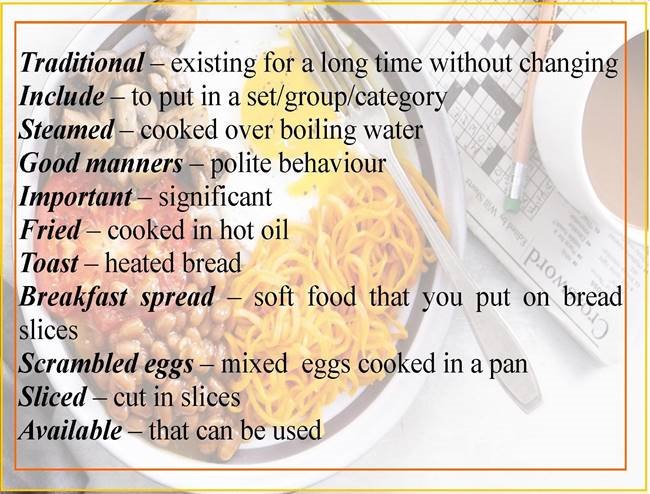
Excelent! So, we have got acquainted with 11 new words which should be memorized for tomorrow’s lesson.
Now, let’s proceed for the task of the exercise. Here we have 2 questions: “What do you usually have for breakfast?” and “Is it the same in other countries?”.
Who wants to answer the questions?
Well done! Now let’s listen to some additional information about different breakfasts in different countries.
Be very attentive and take notes which will help you with answering the questions from the exercise.
(Listening to the Audio 42)
Has everybody understand the listening passage? Well done! However let’s listen to it one more time.
(Listening to the Audio 42)
OK, I am sure now all of your answers will be correct. Let check them.
1. Japan;
2. UK;
3. Poland; 4. UK;
5. Poland.
Very well! So what have we recently learnt? (New vocabulary and information about different styles of breakfasting in different countries)
Yes, great job! Moreover, we have improved our reading, listening and speaking skills.
Grammar
Now, we will repeat the usage and main rules of formation for such grammar structure as be going to.
Look at the blackboard, please. Here we have all necessary elements to create the scheme for sentence with this grammar structure.
Here we also have the name of two main cases for using this grammar structure. I want you to help me with creating the right scheme and explanations on the cases of usage the structure.
Ok, let’s start. Let’s create the scheme for affirmative, negative and interrogative sentences with the structure be going to. (Work with cards)
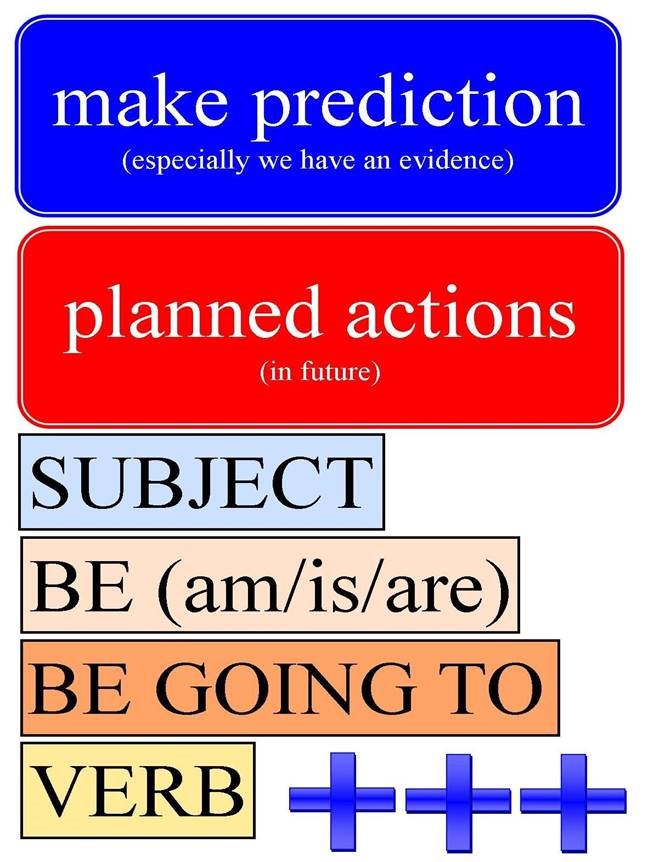
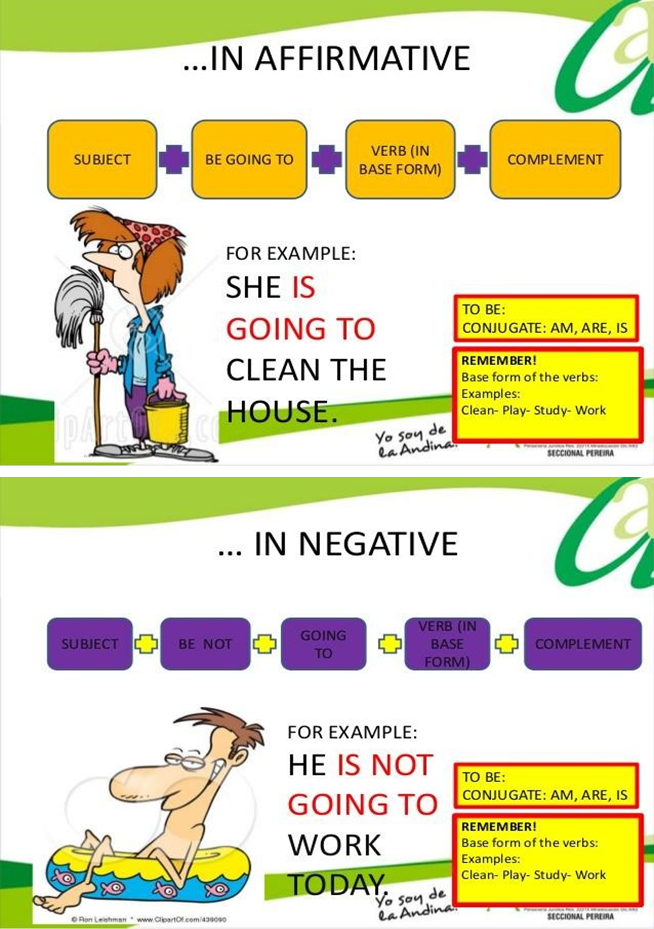
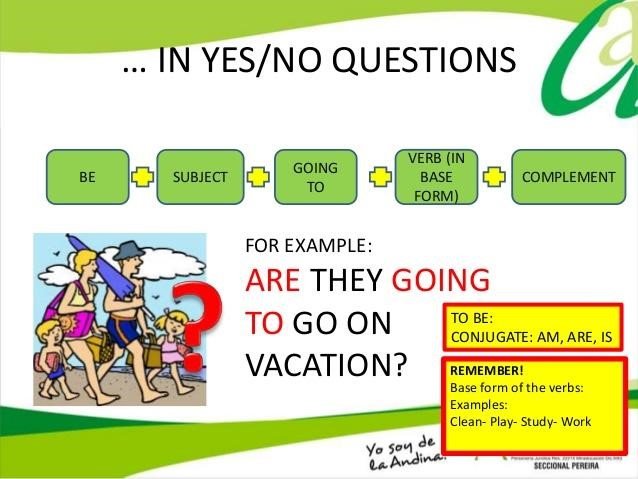
So, we use the structure be going to when we want to make a prediction or to state about our plans in near future.
Writing
Now let’s do the Exercise 7 to develop our skills in our today’s grammar topic.
Here we are asked to complete the sentences with the verbs in brackets.
(Checking the exercise)
Well done! I see all of you are very good in grammar and will be able to cope with the task which I have prepared for you.
On the cards, which I have given to you, you can find a short grammar exercises.
You are asked to connect one part of the sentence with another one.
Is it clear?
Let’s check who is the quickest in our class.
You will do this exercise for the mark. The first three students with all correct answer will get a good mark today. So, let’s start.
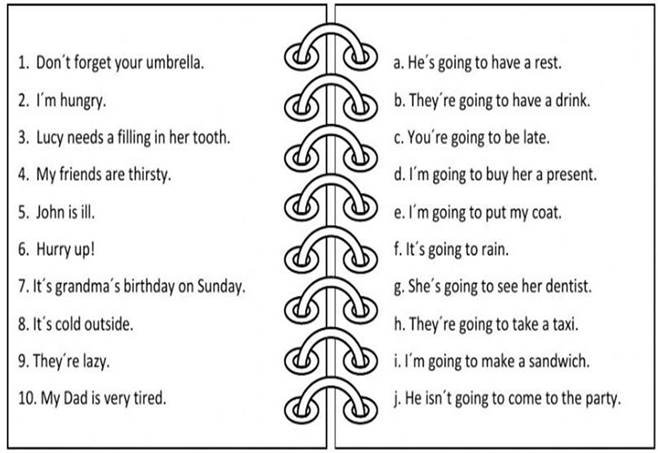
Excelent! As I have promised, three winners will get good marks. Others try to be more active. However, I am satisfied with everybody. All of you have shown good results.
3. Summing up the lesson (2 minutes)
Home task
Your home task will be to learn all new words and to do the Exercise 9 from you Students’ Book, where you are asked to write 6 sentences about what you are going to do and what you are not going to do this weekend. Is it clear?
Ok, our lesson is over. I'm really pleased with you and your work at the lesson.
You've tried your best, thank you. Have a nice day!
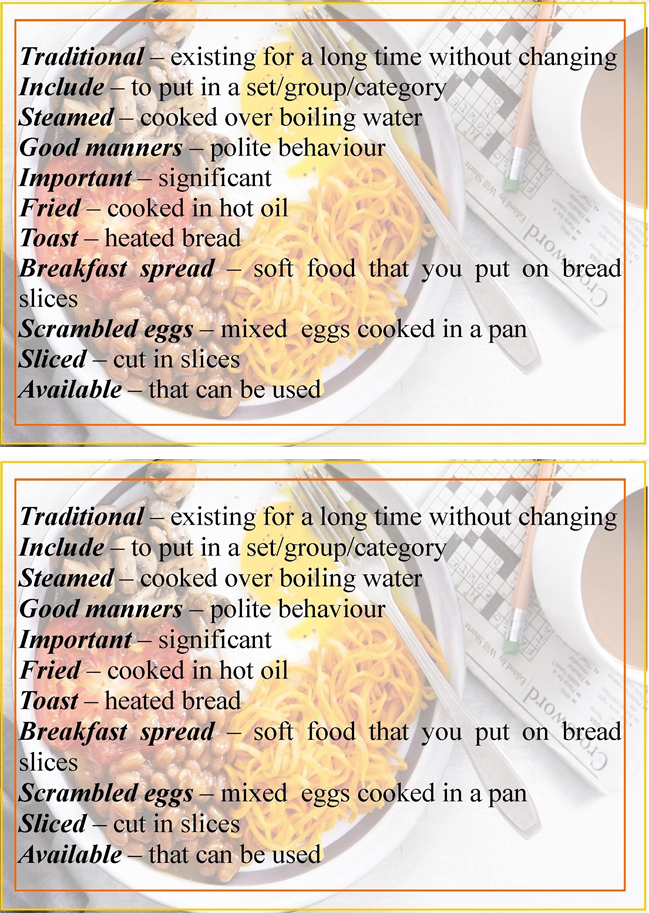
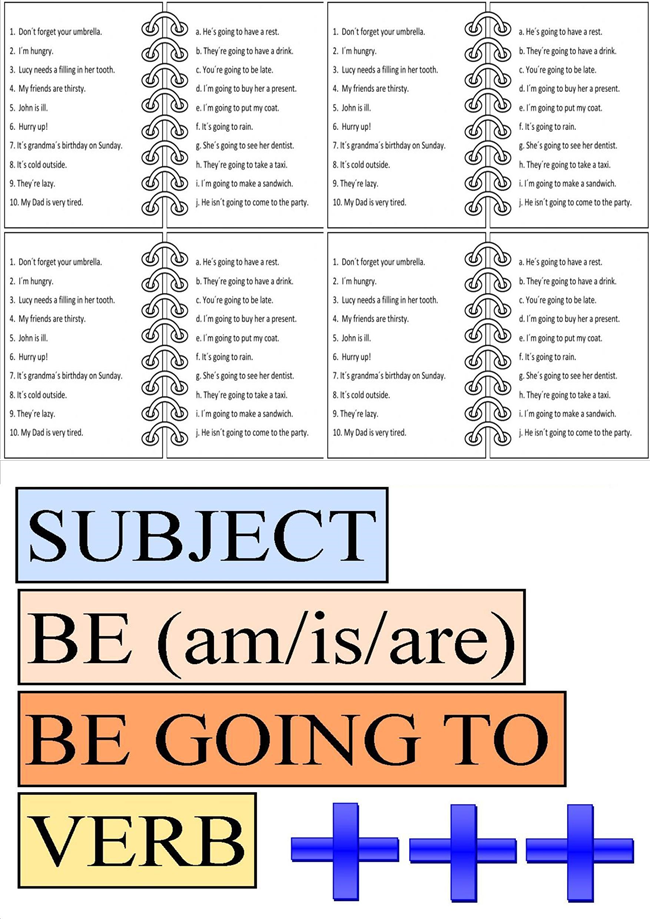
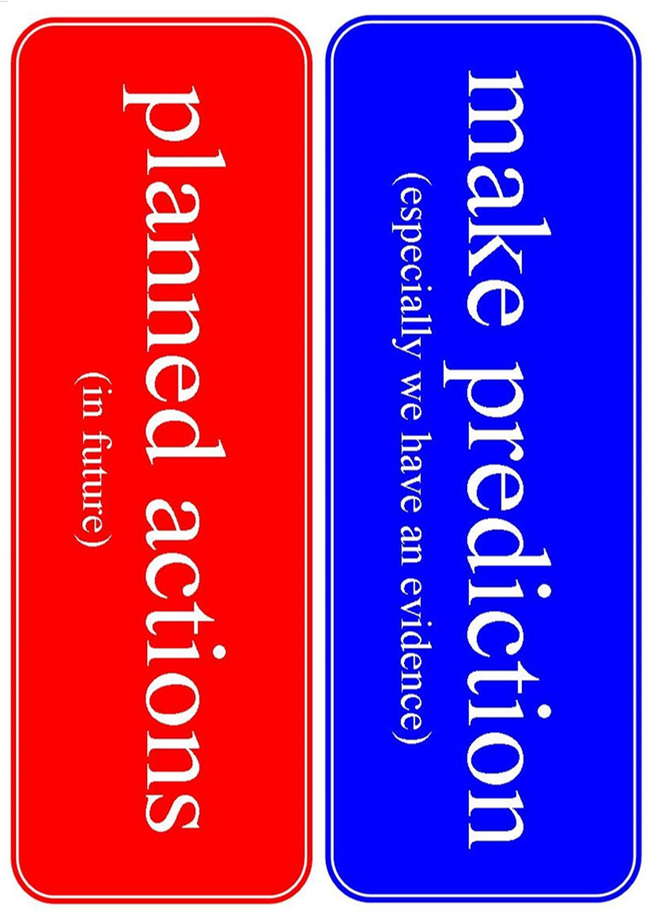

про публікацію авторської розробки
Додати розробку
